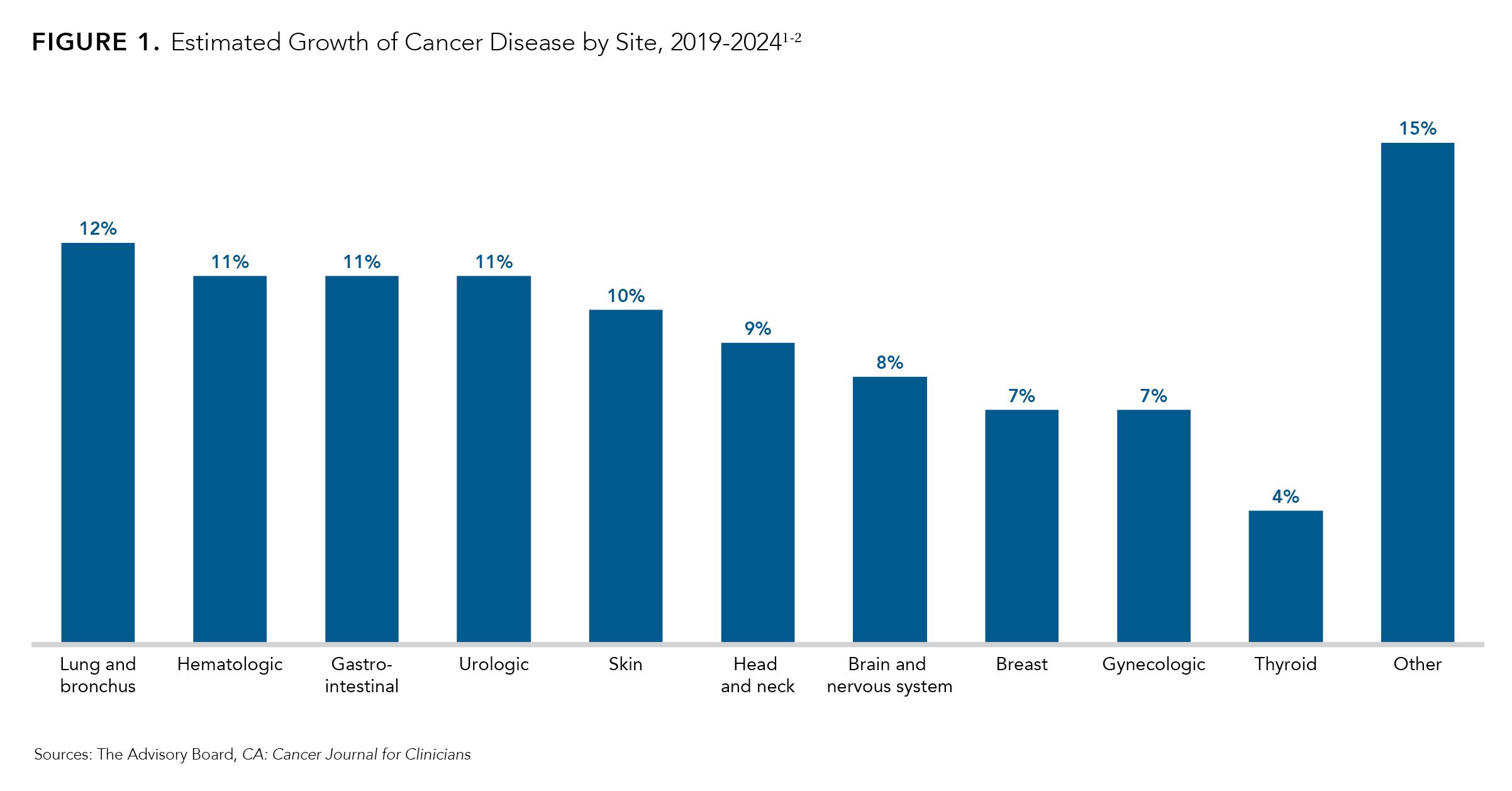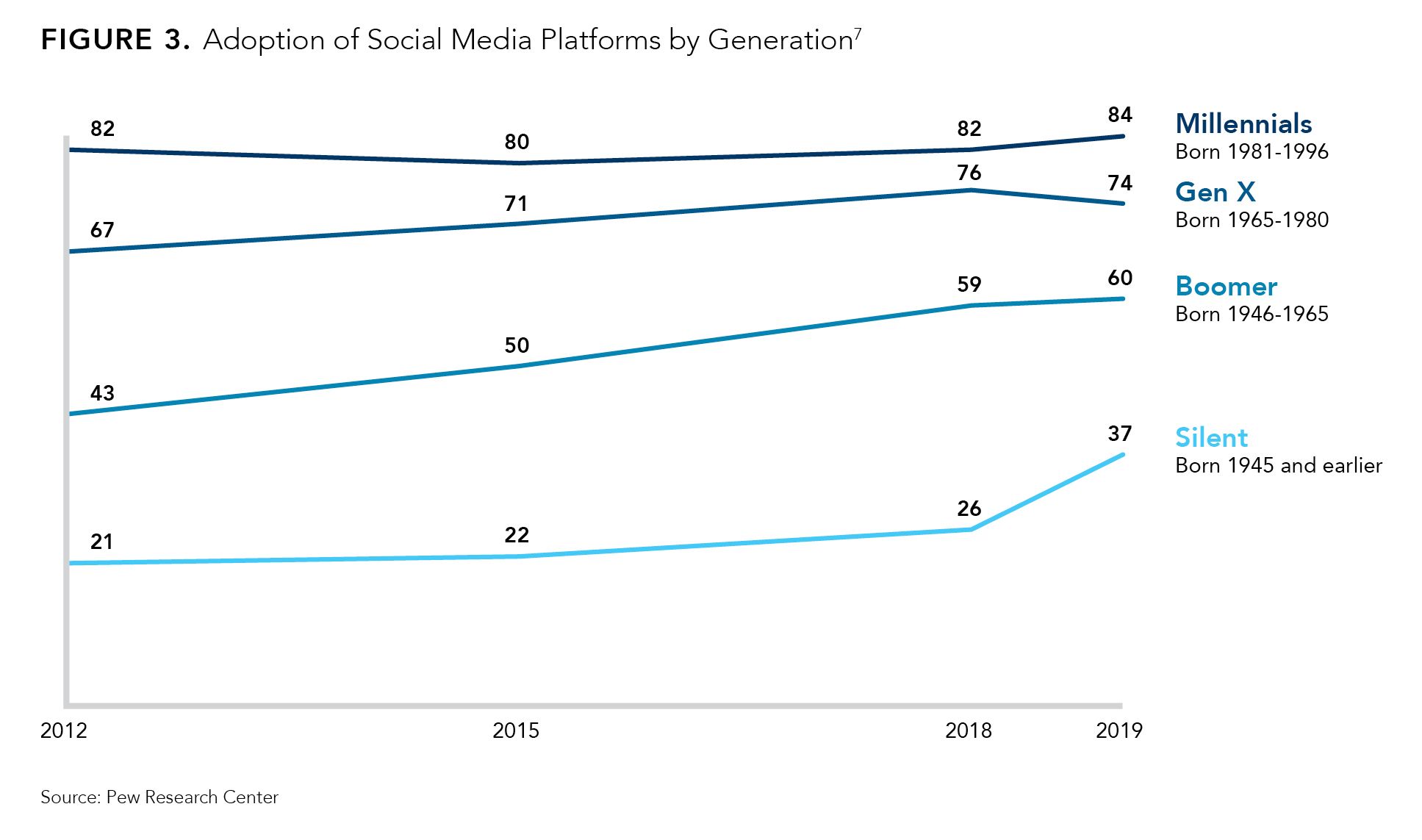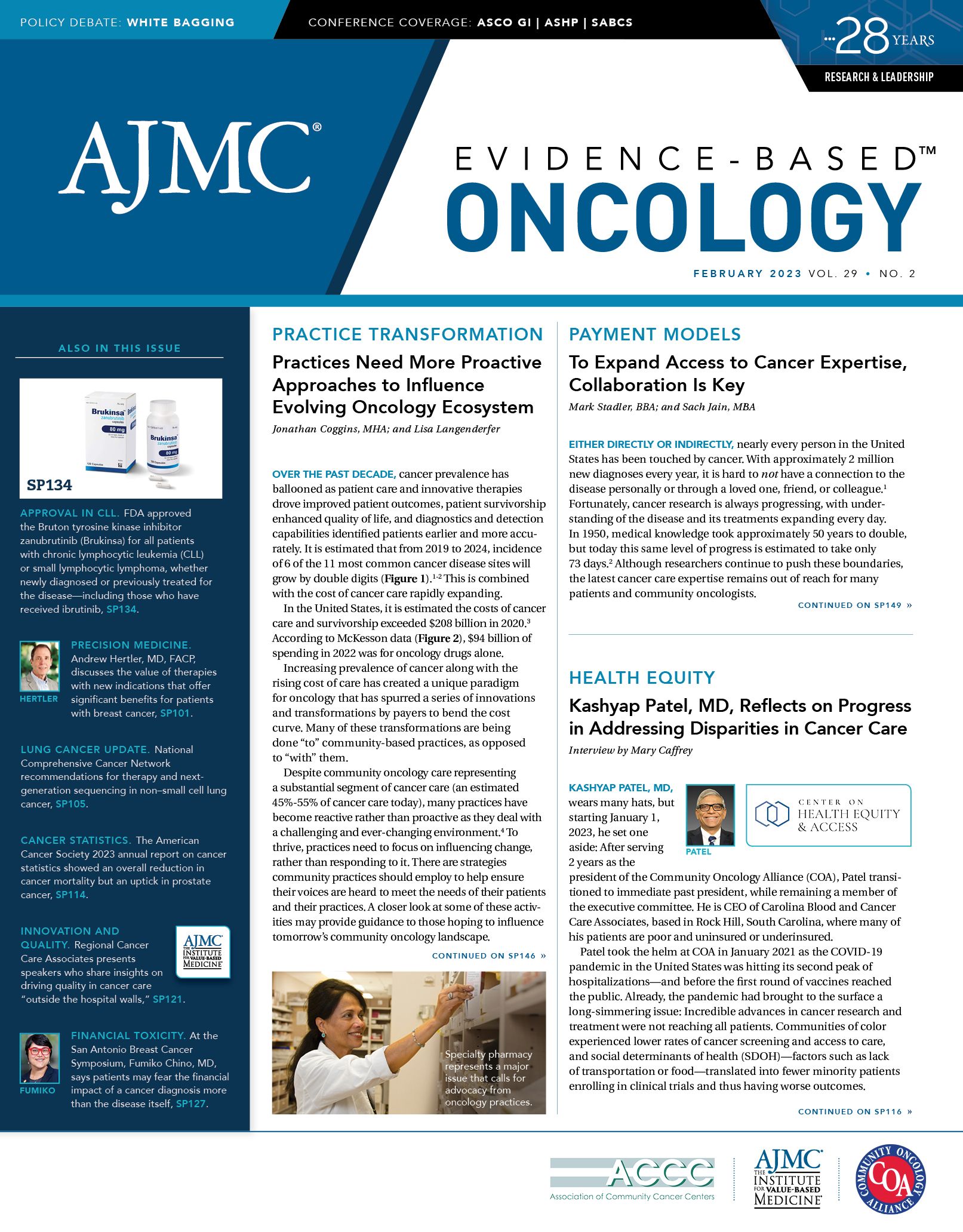- Center on Health Equity & Access
- Clinical
- Health Care Cost
- Health Care Delivery
- Insurance
- Policy
- Technology
- Value-Based Care
Practices Need More Proactive Approaches to Influence Evolving Oncology Ecosystem
Over the past decade, cancer prevalence has ballooned as patient care and innovative therapies drove improved patient outcomes, patient survivorship enhanced quality of life, and diagnostics and detection capabilities identified patients earlier and more accurately. It is estimated that from 2019 to 2024, incidence of 6 of the 11 most common cancer disease sites will grow by double digits (Figure 1).1-2 This is combined with the cost of cancer care rapidly expanding.
Figure 1.

In the United States, it is estimated the costs of cancer care and survivorship exceeded $208 billion in 2020.3 According to McKesson data (Figure 2), $94 billion of spending in 2022 was for oncology drugs alone.
Increasing prevalence of cancer along with the rising cost of care has created a unique paradigm for oncology that has spurred a series of innovations and transformations by payers to bend the cost curve. Many of these transformations are being done “to” community-based practices, as opposed to “with” them.
Figure 2.

Despite community oncology care representing a substantial segment of cancer care (an estimated 45%-55% of cancer care today), many practices have become reactive rather than proactive as they deal with a challenging and ever-changing environment.4 To thrive, practices need to focus on influencing change, rather than responding to it. There are strategies community practices should employ to help ensure their voices are heard to meet the needs of their patients and their practices. A closer look at some of these activities may provide guidance to those hoping to influence tomorrow’s community oncology landscape.
Planning and Taking Action to Create the Future
Given the volatile environment, now more than ever community oncologists and other community-based providers must become increasingly proactive in designing their future, whether that involves making changes within their practice or advocating to stop changes occurring across the health care landscape without their input. Renowned architect and futurist R. Buckminster Fuller may have said it best: “We are called to be architects of the future, not its victims.”
There are many ways community providers can take charge and proactively play a role in building the future they want to see. Here are a few suggestions:
Advocate for the Practice and Community Oncology. Providers must become advocates for not only the patient, as they historically have done, but also for their practices and community oncology. Practices need to reach out to their representatives, making sure they understand the critical role of community oncology. Although approximately 50% of all cancer care is delivered in the community-based setting, the lobbying activities for community oncology do not reflect this high percentage and are overshadowed by competitors. The voice of community oncology is not keeping pace with the changes that are occurring.
Providers must step up their advocacy, making special efforts to connect with local, state, and federal representatives and build strong relationships by inviting them to site visits and special events. This gives policy makers an opportunity to not only learn more about community oncology, but to also position themselves publicly as champions for cancer patients, something that is always well received by all stakeholders. Although becoming an advocate sounds cliché, there are tangible actions that physicians can and should pursue. For example, invite the local legislators to the practice for a tour. The representative gains not only a wealth of information about a cancer practice in their district but is also more engaged in understanding the unique needs of the community oncology setting.
Additionally, community practices must make the tracking and understanding of pending legislation an integral component of their practice operations, so they can be a voice with advocacy groups and governmental representatives when issues of importance come to the forefront. Several states currently have active bills in place that practices should be following that will benefit community providers. The US Oncology Network Government Relations and Public Policy Department assists community oncology practices track what is happening at the federal and state levels through a comprehensive website, LegisLink.com.5 This valuable resource for community oncology provides alerts and links to late-breaking news impacting community care, opportunities to engage policy makers on bills and issues at the federal and state levels, as well as tips on how to be an effective advocate. Every practice should dedicate part of an administrative and physician leader’s time (typically 2 to 4 hours a month) to the monitoring of legislative or regulatory reforms regarding oncology care, and at every practice board meeting there should be reserved time to discuss pending activity. Further, assigning a dedicated physician policy champion who engages with community oncology advocacy organizations creates consistency in a practice’s voice being heard and represented.
Build Alliances and Affiliations. Unfortunately, many community-based oncology practices are not active in major advocacy groups, such as the Community Oncology Alliance, the National Community Oncology Dispensing Association, the Quality Cancer Care Alliance, or a local/regional community oncology organization. Strong advocacy for community-based providers, both in the near term and long range, will be critical as some of the complexities impacting practices continue to emerge in the market. Practices should align and participate with like-minded organizations, as strength in numbers is going to be key in developing policies and strategies that will enable them to thrive going forward. Incorporating advocacy into a practice’s culture can be simple, by creating dedicated roles and incentives for administrative staff to engage in these groups. By fostering engagement and involvement, the ability to create “safety through scale” is attainable. This allows practices to be more informed and able to influence decisions that will impact them more proactively.
Value-Based Care Transformation. Today’s evolution and transformation of value-based care models are merely stepping stones to the future as cancer care for commercial and governmental payers continues to burden their budgets. In short, value-based care is here to stay. Unfortunately, a large number of practices are still not prepared for these complex and sophisticated reimbursement models, especially in terms of data analytics, reporting and, at times, physician compensation models. Developing the necessary capabilities to thrive in value-based care takes a significant amount of time and focus, as well as financial investment. Practices that participated in the Oncology Care Model are prepared for the new value-based models, as over the past few years they had made the necessary operational adjustments and acquired the resources and technologies needed to thrive in this new environment.
Practices that have not moved toward value-based care in meaningful ways or with strong conviction should not delay any longer, because a practice infrastructure built around these new reimbursement models will be absolutely critical for success in the future. Practices that have embraced these models must continue to optimize operations in order to meet the increasingly complex program requirements. Tactically speaking, practices must define a clear road map to drive innovation and optimization across their clinical and administrative operations, from workflow, data capture, analytics and reporting, all the way through revenue collection and patient onboarding. Time to first consult, patient satisfaction, increased scrutiny of provider quality, and utilization of innovative technology have now all emerged as major trends, although just 6 to 12 months ago they were not contemplated to a similar degree. The acute focus on a defined and structured value-based care road map is imperative for practices to become or remain competitive. To put it in context, we have observed the emergence of at least 11 fundamentally different and unique value-based commercial programs across just the top 4 commercial payers in the last 12 months, not including practice negotiated innovative agreements. The degree of fragmentation and the complexities of administering these plans require a thoughtful and highly managed plan in order to drive the requisite capability development in a practice.
Technology Adoption. In parallel with the value-based care landscape, innovative technologies have evolved to support practices, although this has been met with mixed adoption. The global COVID-19 pandemic rapidly accelerated the adoption of select technologies such as telemedicine. However, we have observed a stalling effect in community oncology as the pressure to adopt technology has begun to abate, a trend that is not advantageous. Although every practice likely has a technology road map, we propose an even more action-forward plan that focuses on innovative technology and patient experience as fundamental pillars. We highly advise practices to create an end-to-end patient and practice journey map and identify clear and actionable investments in technology to enhance both. This plan can not only enhance the workflow and automate process to reduce staffing shortage challenges but create a more compelling value proposition for patients. Although it is true that younger generations tend to embrace technology more proactively, in a recent analysis by Pew Research Center of social media user groups, the most rapidly adopting population of large social media platforms such as Facebook were actually baby boomer and silent generations, indicating that the needs of patients across generations are moving to more digitally forward modalities (Figure 3).7
Figure 3.

A Model for the Future
When the government and commercial payers focus on the overall oncology disease burden, we can begin to ascertain the direction of where pressures and changes will be exerted on community oncology. Payers and providers are beginning to work together in new and meaningful ways as all parties seek to improve patient outcomes, and several more innovative programs are emerging that are worth a closer look. These models leverage the right assets, providing physician upside and downside risk while focusing on patient care and advocacy.
Practices are incentivized for the quality of care and cost savings they provide, with the right incentives to ensure patients receive the correct therapy without merely focusing on cost. These programs also aim to reduce the administrative burden of working with commercial payers, a critical issue considering the complexity of value-based care.
Given the many positive aspects of these models, with a few adjustments they could perhaps serve as standards or templates for the future. However, the nascent nature of these programs and the still hyperfragmented approach by payers means that the market has not settled on a broad approach to bending the cost of care curve. This gives physicians, practices, and patients the opportunity to directly influence behaviors, but it requires practices to drive meaningful and planful actions.
A Call to Action
Health care has changed quite a lot over the past decade, and not all for the better. Historically patient care was decided and delivered in the exam room, but now much of it is determined in the legislature or the boardroom. Consequently, unless practices are proactively advocating for and driving proactive transformation in their behaviors, change will continue to happen without their collaboration and input.
Practices must realize that inaction is in itself an action. Thriving in this challenging environment no longer just involves thinking about reimbursement fee schedules; it also requires practices to make advocacy and innovation a core component of their overall practice strategy and a tenet of how they ensure practice viability for the future.
Author Information
The authors are employed by The US Oncology Network and McKesson Provider Solutions. Jonathan Coggins, MHA, is vice president, provider strategy and operations. Lisa Langenderfer is senior director, federal government relations.
References
1. Riley A, Paul L. 2021 oncology market trends. The Advisory Board. March 24, 2021. Accessed January 19, 2023. https://bit.ly/3ZOjGKd
2. Siegel RL, Miller KD, Fuchs HE, Jemal A. Cancer statistics, 2021. CA Cancer J Clin. 2021;71(1):7-33. doi:10.3322/caac.21654
3. Mariotto AB, Enewold L, Zhao JX, Zeruto CA, Yabroff KR. Medical care costs associated with cancer survivorship in the United States. Cancer Epidemiol Biomarkers Prev. 2020;29(7):1304-1312. doi:10.1158/1055-9965.EPI-19-1534
4. What is community oncology? Community Oncology Alliance. 2017. Accessed January 19, 2023. https://communityoncology.org/wp-content/uploads/2017/08/What-is-Comm-Onc.pdf
5. Linking physicians to policy. Legislink. Accessed January 19, 2023. https://legislink.com/
6. McKesson ODIN drug database. Accessed December 13, 2022
7. Vogels EA. Millennials stand out for their technology use but older generations also embrace digital life. September 9, 2019. Accessed January 19, 2023. https://www.pewresearch.org/fact-tank/2019/09/09/us-generations-technology-use/

